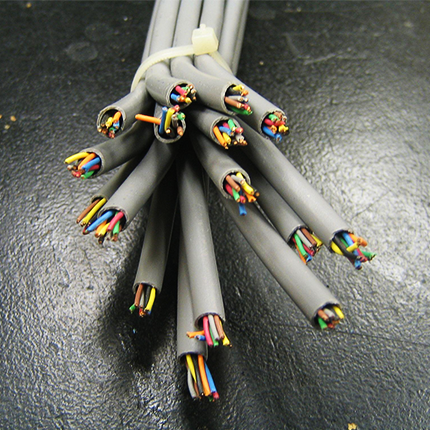I got the T460 refurbished and I really didn’t want to run Windows 10 on it. I last used Linux for any real length of time a good 20 years ago, so I’m pretty inexperienced with it at this point and I had to figure out how to install it myself.
They made it unreasonably difficult to first install an OS from a USB stick. I had to go into the BIOS, turn UEFI to legacy, turn off secure boot, reboot to boot from the USB stick, install Mint, then turn legacy back to UEFI to get it to boot from the hard drive. This took about 2 hours of trying to figure it out by doing a lot of forums reading.
I do not blame the Mint community or the Linux community as a whole. There is absolutely no reason that it should have been that hard to install Mint on that notebook.
I don’t even think getting into the BIOS once time should be necessary, but changing a BIOS setting so you can install the OS and changing it back so you can run the OS off the internal drive is just ridiculous and I find it hard to believe Lenovo couldn’t have just made it easier. I’m fairly convinced this was intentional on their part.
I’m not an IT professional or anything, but I know enough to figure this stuff out with effort, but it shouldn’t have taken that effort. It should have been almost plug-and-play. This is 2024. The notebook isn’t even 10 years old.
Is there actually a good reason for this or are they just kissing Microsoft’s ass?
Edge ISO might have helped. It even supports secure boot.
I’m not familiar with Edge ISOs because I am a total novice here, but Mint’s website says, “If you cannot boot or install Linux Mint because your hardware is too recent and is not properly detected, you may get better results with the “Edge” ISO image.” This is 2016 hardware, so would it have applied?
Probably, sometimes I feel like some of the linux community thinks stuff made in 2015 is ‘recent hardware’ lol
I totally agree. I am an IT Profe and it’s still very irritating to have to jump through these hoops. Plus each manufacturer has a different key you need to press to access the bios. Sometimes the same OEM will have different keys on different models.
So you try the normal ones which don’t work and then have to Google the model number to try find out which key to hold.
Frustrating and time consuming. And definitely makes it very difficult for the average user to install Linux.
I sometimes think Microsoft did it on purpose to hinder Linux installs and then disguised it as “security”.
It’s not really “security” if you can turn it off is it?
I recently installed it on a t480 while distrohopping. I didn’t need to turn off uefi, secure boot has been off since i got this laptop and i never turned it back on. My best guess is that you either did something wrong when making the live media, or during the installation. Next time try using ventoy, it’s a really useful tool.
I’ll try Ventoy next time, thanks. I just followed the install instructions on Mint’s website which says to use Etcher. Maybe that’s the problem.
Also, did you manually edit your partitions? It might be related to your bootloader being in
/bootinstead of/boot/efi. The first one’s for legacy bios, and the second is for uefi.Nope, I didn’t do that either.
This sounds like it was strictly the fault of the USB load. If you make a UEFI USB (you should use Ventoy, it’s great btw) all you would need to do is shut off Secure Boot and install.
Most bootable drives don’t support Secure Boot. You turn it off, do the install, and turn it back on if you want it. I personally just leave it off.
Outside of those caveats everything you described is industry-standard stuff. Nothing to do with Lenovo.
That’s what you get when you buy Lenovo. It can’t even run Windows properly most of the time how did you expect it to run Linux?
Seriously if you go into any large company and ask why they don’t use Lenovo they’ll simply tell you that the failure rate of those machines is way to high to be worth it. Like order 50 and only 10 are in working condition after 2 years… or a simple USB 3 cable running along the computer will make it slow because there isn’t enough shielding on the machine.
how did you expect it to run Linux?
Because I asked in this community and got a bunch of people who said they ran Linux on it and it worked just fine? Which it does now that it’s been installed.
Hardware recommendations are really hard, brands to a lot of shit and there are a LOT of small details that make it so a small revision on the same model can make or break compatibility with Linux.
For me, personally I always got the best result with HP EliteBooks from 2 or 3 generations bellow the current one and the latest Debian. But again, that’s just personal experience, nobody can guarantee you that you won’t pick a very specific EliteBook with some awkward detail and things will fail.
I’m surprised HP notebooks are trustworthy at this point.
Depends on the line… the high end enterprise products (EliteBooks) are very solid and good, they also provide very good servicing, every piece of those machines is replaceable even screws have serial numbers and can be ordered from HP.
ProBooks are a mixed batch, some are decent others are total garbage. Consumer grade HP mostly follows the same trend, if you go for machines that are “Apple-priced” they’re good, otherwise crap. Still not as crap as Lenovo became after China.
That’s surprising, Thinkpad x240 owner here. With all the os i installed on it i never had to do such overcomplicated manipulation, just bios entering + boot on usb.
Maybe it’s just a 460 thing?
You probably should use uefi as it is better in a lot of ways.
…what?
It tends to be more reliable and is easier to work with
Yeah, okay, but what has that got to do with the price of fish? I think you’re misunderstanding the post entirely:
When OP mentions going into the “BIOS” they’re using the term as the common name for the device settings menu that you can enter on boot. It is however a UEFI-based device. What OP had to change was the “Boot Mode” from UEFI Mode to Legacy (or BIOS) mode. This affects how the UEFI looks for Operating Systems to boot, forcing it to search for Master Boot Records rather than EFI partitions, and booting those in a compatibility mode. This seems to be a bug with Lenovo’s implementation of UEFI, as it did not detect the Linux Mint Live USB’s UEFI partition. Most Live USB’s are still set up with a backup BIOS bootloader. OP then had to go back into their “BIOS” (UEFI) and re-enable UEFI boot mode to be able to boot into their newly installed Linux Mint partition.
What I’m struggling to understand is why you gave the advice “you should use UEFI” when OP was already using a UEFI-based system…
That sounds extremely infuriating! Regarding Lenovo and Linux Mint, I actually had a very good experience with them a little over a year ago. I bought a new IdeaCentre 5i pre-built desktop tower and had zero issues installing Mint on it. All I had to do was press F12 and select to boot from the bootable USB to install, no screwing with the BIOS or anything. But I’ve never tried installing Linux on a laptop. I only use desktops.
It was so stupid. F12 should have been all it took, but it didn’t even recognize the USB drive existed.
As someone who also installed Mint on a Lenovo, I feel your pain. The only difference is that I was aware of the BIOS setting before I did the install because I’d read some forum posts preparing myself for the install.
Well done. It’s a Lenovo issue. Had to do the same thing recently for a friends laptop and did the same dance.
I have some IT background so kind of knew what to look for but it still was a pita.
It’s just so stupid. Obviously other notebooks don’t have this issue. Some people are blaming Mint for not doing anything about it, but I’m still blaming Lenovo mostly.
UEFI looks like another over-complicated proprietary shit that make PC more and more locked.
It is not
Thanks for the update <thumbs_up>
I had to go into the BIOS, turn UEFI to legacy, turn off secure boot, reboot to boot from the USB stick, install Mint, then turn legacy back to UEFI to get it to boot from the hard drive.
That is ridiculous and it does sound like a Lenovo problem.
I’m running Mint on a Surface Laptop (which was difficult to install because Microsoft), but getting Secure Boot working only required changing the UEFI settings to allow non-Microsoft Secure Boot certificate. With that set Mint boots just fine both with Secure Boot enabled and disabled. So do USB installation ISOs.
Secure Boot can still be a pain. To get Virtualbox working with it enabled required signing several kernel modules which took a while to figure out.
Mint is great though. After distrohopping for years I finally decided I wanted to just use the OS and GUI, not play around with them. The latest versions of Mint just work once they’re installed. For me, going back to Windows (especially W11) feels like punishment. I hope you enjoy the switch.
Admittedly, I’ve only been able to play with it on and off today, but I am really liking it so far (except Firefox, which apparently no longer has a compact mode). I’ve had to use Macs for years for work reasons, but I don’t have to anymore and I said to myself that when my ancient Macbook died, I would replace it with something that runs Linux. MacOS is okay, not terrific (I hate how much RAM it uses though). I don’t mind using it, but I am not going to pay Apple’s prices now that I don’t have to just because it’s less annoying than Windows. So Linux is the perfect answer!
MacOS is okay, not terrific (I hate how much RAM it uses though).
On that note, I’ve been amazed how well Mint works with just 8GB of memory. I’ve had Firefox and Chrome running with plenty of open tabs, Thunderbird, Libreoffice Calc, and a half dozen other programs open while running W10 in Virtualbox. Mint just takes it in stride.
Use KVM I stead of Virtual box. It is way faster
I use a W10 VM for processing individual files once a week or so. With the required 2 Windows programs it takes about 3 minutes to complete the task and shut down the OS. Not worth switching.
Virtual manager with make it run so much faster though. Also its not a bad idea to have a few VMs just for fun anyway
Well, you shouldn’t have to turn UEFI off to boot from the USB stick. That one could actually be on Mint. Or on the way the stick was created. It’s been a while since I messed with this stuff but by now a typical Linux installation medium should be able to boot with UEFI.
The secure boot is enabled by default so that only signed operating systems and not some malware can boot the computer. And I guess it’s legitimate to not have the keys of all the Linux distributions under the sun in there.
I’m not a secure boot expert, but it sounds like Mint should be supported anyway, according to Wikipedia:
Secure Boot is supported by Windows 8 and 8.1, Windows Server 2012 and 2012 R2, Windows 10, Windows Server 2016, 2019, and 2022, and Windows 11, VMware vSphere 6.5 and a number of Linux distributions including Fedora (since version 18), openSUSE (since version 12.3), RHEL (since version 7), CentOS (since version 7), Debian (since version 10), Ubuntu (since version 12.04.2) and Linux Mint (since version 21.3). As of January 2024, FreeBSD support is in a planning stage.
Support doesn’t mean that their key is in there, though. It could also just mean that it has the ability to store its own key.
I don’t feel like that’s exclusive to Lenovo, fwiw. I have an Asus laptop, and it went like that for me installing Linux from a USB stick. It was a hassle and you’re right that it seems harder than it needs to be.
I don’t have any idea why it’s like that, but it feels like it’s a better option than someone being able to walk up to my PC/laptop/whatever and change my os just by using a thumb drive without any other hoops to go through. That’s just where I stand on the issue, but you’re right that it sucks for the owner/user.
If you walk up with a Windows usb, what would Happen? Would you just be able to reinstall windows and even have it activated by the key in the TPM? I think so.
I guess I don’t know - I think you’d still have to go into BIOS and switch it to boot from USB? I don’t know about the rest of it, but I’m pretty sure it wouldn’t just start installation. Unless it’s a thumb drive specifically tailored to take over someone’s system?
So yes, you could reinstall Windows, but it would still require a reboot to BIOS to allow for it. Am I missing something? What’s the big “gotcha” that I missed? I genuinely don’t know, and since I am not an expert on installation of OSes, if you could enlighten me, that could be useful for me.
I’m not very sure myself, thats why I phrased it that way ^^ wasn’t supposed to be a gotcha.
Didn’t try in a long time and maybe even tried without sacure boot, but all the times I put a windows USB in a windows machine and told it to boot from it (without entering bios, just a boot selection by hitting the right key) it just started so you could just reinstall windows, even with the old installation being moved to windows.old, so it could be searched.
Could be totally wrong here.
Hell, I could be wrong too :-P I’ve never gone in that direction - only adding a Linux dual boot from USB stick. That sounds kinda scary, and would definitely make it easy.
Well, damn. Thanks for warning me about that possibility - looked like more steps that included BIOS last I checked, but as I said, I’ve never needed the process.
¯\_(ツ)_/¯Yeah, I’m probably going to put some research in, as I don’t really like the thought ^^
Thanks for being critical and not just believing a random stranger on the internet
Haha - you too! I am also going to have to look into that, just in case 😅












